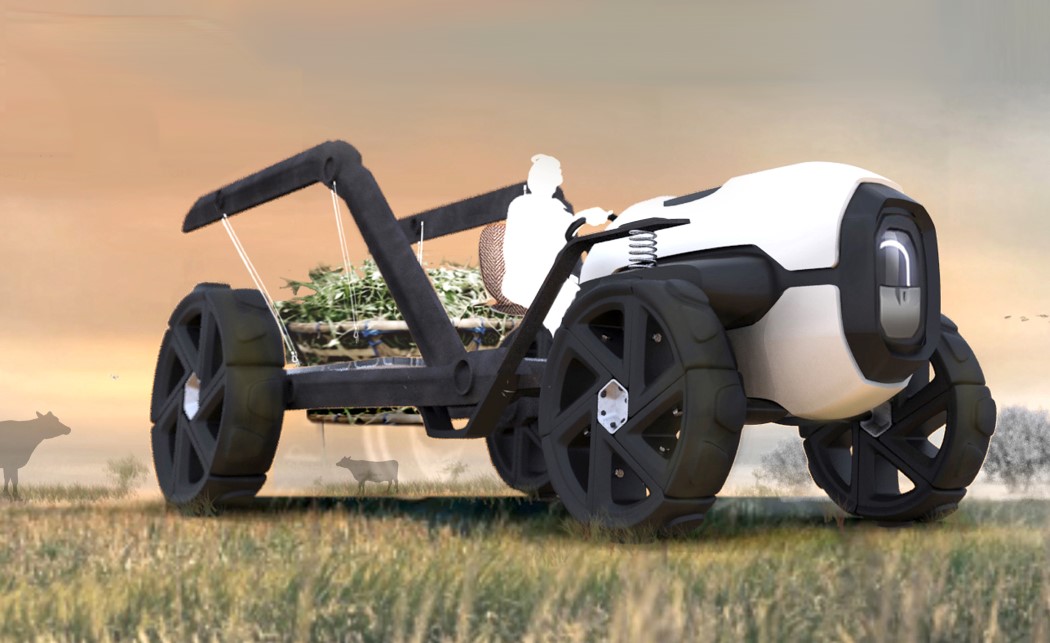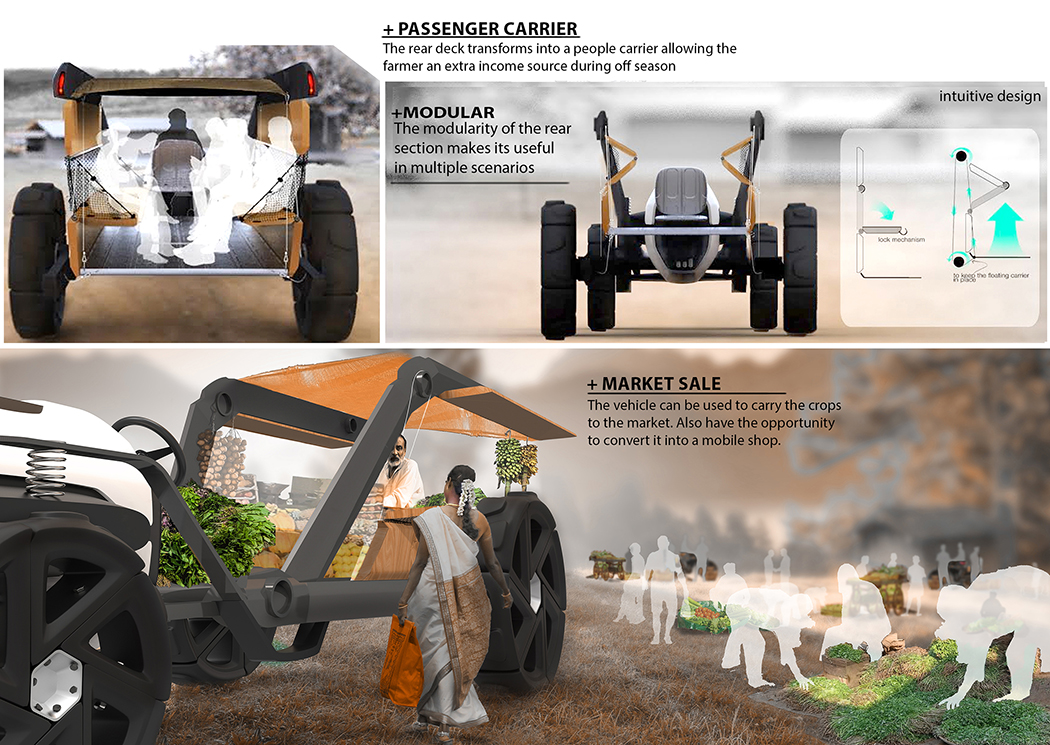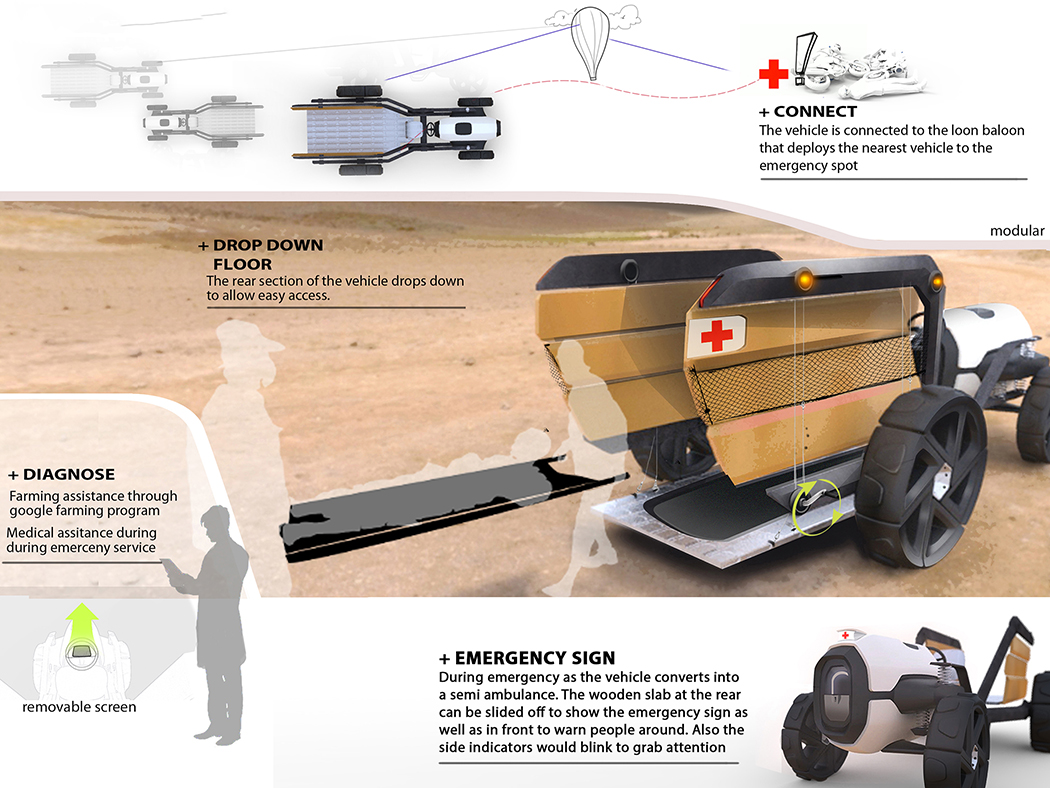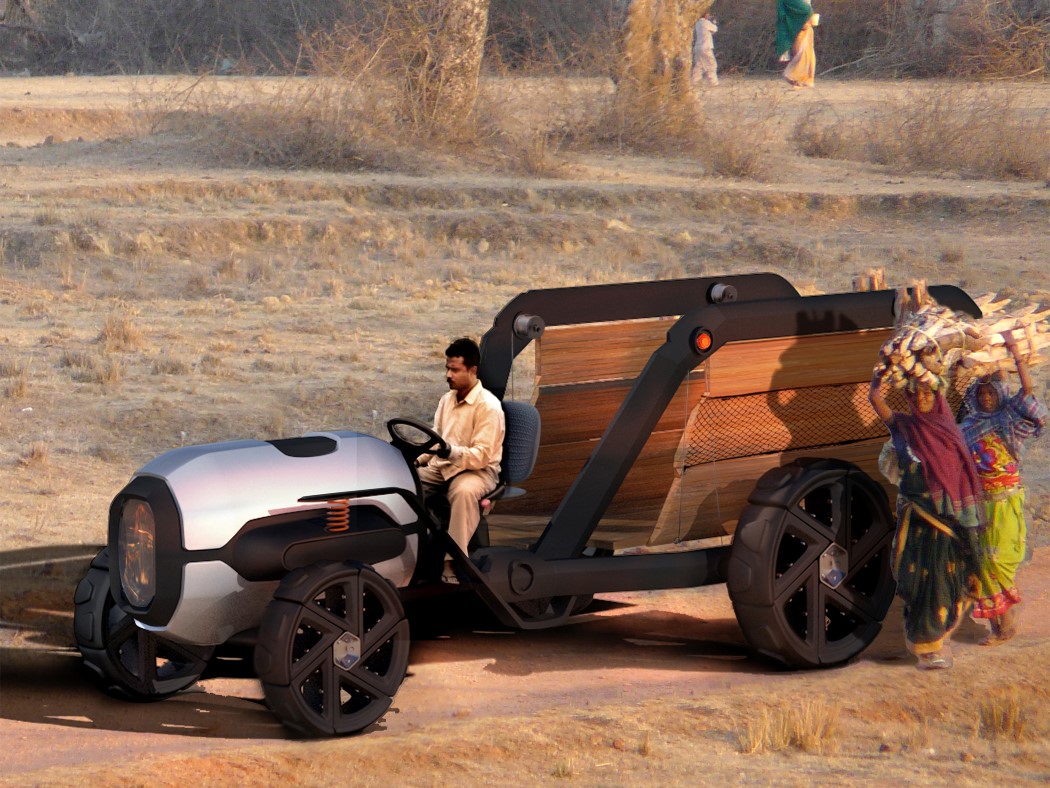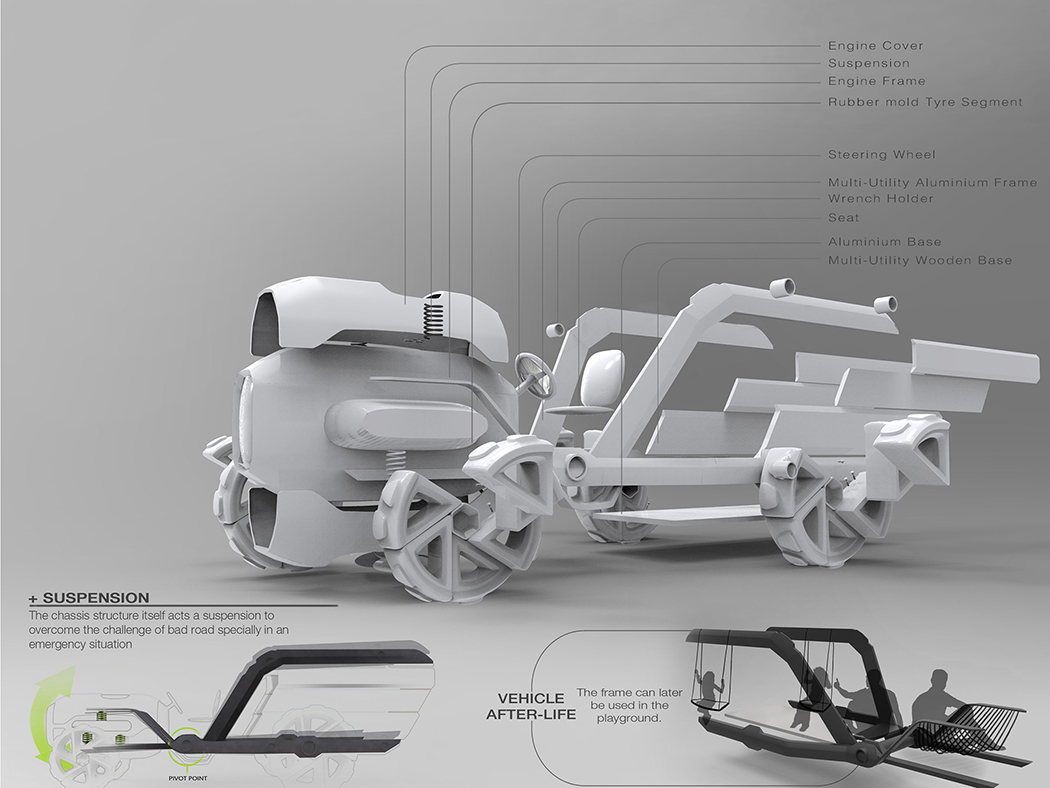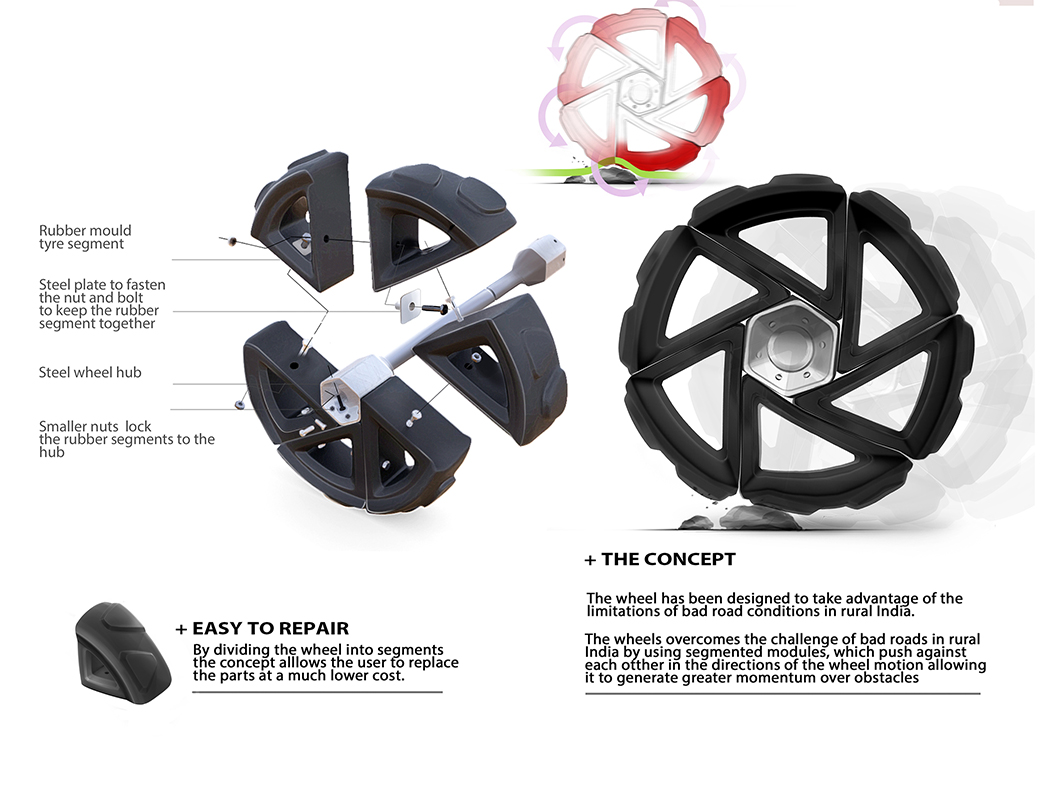
Well, 2020 is getting really annoying by the day so I am going to look towards the future. Since I am always told to focus the bright side and be hopeful about the future when the present isn’t great, let’s do it through the design lens. Project Outreach is a modular transport vehicle that was designed to support and develop rural infrastructure in 2045 (of course, this is a concept design so don’t send me an email after 25 years). The conceptual vehicle has a very Tesla-esque aesthetic, it is futuristic without being aggressive like the Cybertruck.
Developing nations need a tech boost to uplift themselves. If the land is mostly flat, the infrastructure is not that hard to create but there are many nations like Africa that have a variety of massive landscapes that will need powerful machines like Project Outreach to do it efficiently. The vehicle’s main aim is reaching out as the name suggests. The goal is to reach the communities in need and provide supplies to facilitate rural development by being a one-stop-shop through its multifunctional modules – Water Mod, Plant Mod, Work Mod are just a few examples. This is meant for micro-communities and the staff will deliver the module to them and change it out when needed.
The Water Mod is equipped with irrigation and sanitation technology to help areas where there is a draught or generally improve water crisis. The Plant Mod comes with agricultural tools to help seed crops in a controlled environment and provide relief for food shortage. The Work Mod is more for research, study, educational needs, and providing a small living quarter. The concept design is something that will be a blessing to refugee communities. Imagine how one vehicle can be a school for a small group of children who have nothing else to hold on to, provide food and water in a crisis with capabilities to expand into a medical space if needed.
Project Outreach makes me hopeful about a future where can empower those who communities who were hard to reach out to. It may be a design but it radiates values and morals that are rooted deeply in kindness and making a positive change – after all, isn’t that what humanity is all about? We don’t have a wand but we have imagination, design thinking and equipment to make it happen so I’ll say that is close enough.
Designer: Alexander Edgington























